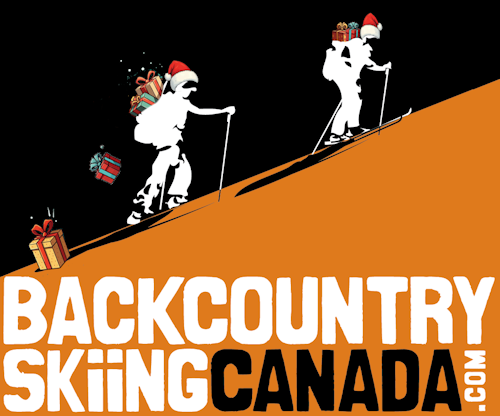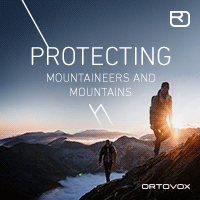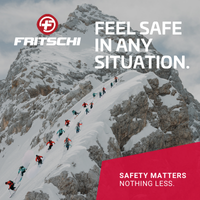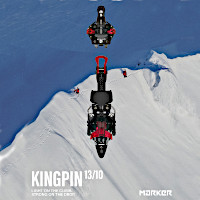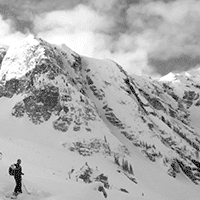Avalanche Conditions Update
A very concise and important read from the CAC - take the 6minutes and give it a go - it might just come in handy:
Canadian Avalanche Centre - Public Avalanche Warning Service
Avalanche Conditions Update, April 8, 2011
Prepared by Karl Klassen
Recently, the CAC solicited opinions from avalanche practitioners about the potential for persistent weak layers creating deep persistent slab problems this spring. Thanks to those who sent responses from many regions. Your thoughts are of great value and we appreciate the time you took to help us out. Following is what I’m thinking based on comments from the various folks who responded, listening in on the forecaster’s daily hazard assessment meetings here at the CAC, and watching the evolution of the weather and snowpack over the last week or two. This is not a scientific analysis but more a personal opinion based on my experience combined with ideas from others.
Keep in mind that no matter how good the conditions are, there’s always something to think about and this spring is no exception. My intention here is not to ring any alarm bells. In fact, overall the snowpack is in good shape and it’s one of the best seasons we’ve seen in a long time. In most places, much of the time, it’s pretty good to go if you apply a little common sense and think your actions through before hitting the throttle. Have a great spring!
IT’S A COOL SNOWY SPRING SO FAR
Spring is late in coming so far this year and the snowpack in most areas is more like late winter, especially at upper elevations. The usual spring melt-freeze cycle that produces relatively easy to predict wet/slushy avalanche cycles has not yet happened. Short periods of sun and warm temperatures in March and April created some thin sun or temperature crusts, and these remain in the upper snowpack but for the most part are not big concerns. Unseasonably cold temperatures and ongoing short duration, light to moderate intensity storms mean non-persistent avalanche problems (e.g. storm snow, wind slab) are issues that come and go with storm cycles. For the most part, non-persistent weak layers settle and bond within a few days.
These avalanche problems are best managed with good trip planning using regional avalanche forecasts (check http://www.avalanche.ca) and local information, applying normal caution, and using routine safe travel procedures (things like not grouping up in runout zones, going one at a time in avalanche terrain, avoiding/minimizing exposure to terrain traps, etc.). My approach also includes holding off on aggressive, complex, large, and steep terrain for two or three days after significant snowfall, winds, or rainfall.
At this time of year, warm sunny days or rain can produce pretty big loose wet avalanches and wet slabs are possible. These are only an issue if the snow is wet or slushy, so dangerous conditions are generally pretty easy to recognize. Managing risk is largely about timing: mornings, when the snowpack is frozen, are generally better and danger increases later in the day as sun and warm temperatures melt the snow. I pull back to smaller, lower angle, simpler slopes on warm sunny days when the snow surface starts getting wet.
Learn more about recognizing and managing all of these problems here: http://www.avalanche.ca/cac/pr.....sionmaking (look for the applicable “Avalanche Problem Essentials” document in the right sidebar). My most recent terrain analysis in SnoRiders magazine discusses spring avalanche problems. You can find the original version here: http://www.avalanche.ca/CAC/Li.....is%207.pdf
PERSISTANT WEAK LAYERS (PWLs)
While we’ve been tracking a number of potential PWLs this winter, at the time I’m writing this, consensus is that none are active. There are lingering concerns, however, and I review those below. Again, I’d like to stress that my intent here more to provoke thought, provide some ideas for what to look for as spring progresses, and provide some decision making guidance. I don’t mean to suggest that any serious PWL conditions exist right now and I do not think unusual or extraordinary risk management measures are required. Just remember things can still change before the end of the season and, right to the end of the season, I encourage you to keep your head up and make informed decisions rather than taking uninformed chances.
November Facet/Crust
This layer is very deep and difficult to trigger but if it goes it will produce massive, un-survivable avalanches. It’s still in the back of peoples’ mind here:
? Inland areas of the NW region
? Inland areas of the South Coast Mountains
? North Rockies
? Northern Cariboos and Monashees
? Eastern Selkirks
? Purcells
? Rockies
Reloaded Mid-January Bed Surfaces
These bed surfaces were created by large avalanches during the Jan 17-20 cycle. They are hard and smooth, have facets on them in many areas, and since mid-January have been reloaded with metres of new snow. There are few indications they are active but especially in the Purcells and possibly in the eastern and southern Selkirks, folks are watching these carefully.
January 18th Rain Crust: SE corner of BC
This layer appears limited to the area from the US border north through Moyie and Cranbrook to Wasa, and east through Sparwood to the Alberta border. This layer produced a small but intense cycle of large avalanches at mid and low elevations in the Lizard Range near Fernie for a day or two around March 11th. Since then, at least one decent loading event produced no further action. That said, folks down there remain very aware of this layer and are treating it with a high degree of scepticism and caution.
February 21 Crust/Surface Hoar/Facets
Most people feel this layer is reasonably well bonded and unlikely to reactivate. That said, it’s not completely out of the realm of possibility that this layer might pop up as a step-down slide if a cornice fall or smaller avalanche hits slopes below.
Cornices
Almost everyone is talking about how incredibly big cornices are this year and, in many cases, how poorly supported they appear to be—a result of the slow and dry start to the winter followed by big warm storms and ongoing loading. Large cornice falls produce a couple of issues:
a) They can trigger avalanches on slopes below, including non-persistent and deeper persistent weak layers.
b) Even if no avalanche results, they can be very large and destructive.
The Take Home Message For Managing Risk
Human triggering of persistent or deep persistent slabs is unlikely at the moment unless you get too aggressive in extreme, complex terrain with shallow, variable snowpacks, especially:
? During or shortly after heavy loading from snowfall, rain or wind.
? On sunward slopes on warm sunny days.
Sledders are more at risk due to the extra weight of their machines and the possibility of cutting through upper layers if trenching or stuck.
Natural triggering of persistent or deep persistent slabs is unlikely until spring hits for real. The general consensus is that normal spring snowfall and windloading events will have little effect on any persistent weak layers, but most professionals say they will pull back and wait for a few days to see what happens if significant storms occur—more so in areas noted above where these layers were better developed and/or more active earlier in the winter. Everyone is taking measures to minimize exposure to slopes where a cornice fall or smaller avalanche from above might trigger something on larger slopes below.
Almost everyone agrees we’ll see big cornice falls and action on some or all of the PWLs mentioned above if we get an extended period of warm, sunny weather. Even in areas not mentioned above, such as the South Coast, folks were saying they would not be surprised to see big avalanches going very deep when a significant warm-up occurs. Looking at the weather pattern this spring and long range forecasts, the big thaw might not happen until lower elevations are melted out, access is difficult/impossible, and most people are enjoying summer activities in the valley bottom. At risk might be hard core sledders willing to work hard to access late season alpine snow and ski traverse parties who tend to wait until the spring high pressure system is established—exactly the scenario that might produce a significant thaw. I’d be pretty careful in most places if you are still out there when spring truly arrives, especially during the first hit of very warm temperatures in the alpine coupled with strong solar radiation.
Feel free to distribute this to others or repost in other venues. Please contact me if you have questions or comments.
Karl Klassen
Public Avalanche Warning Service Manager
Canadian Avalanche Centre
250-837-2141 ext. 227
